Issar Tzachor
Find your Needle: Small Object Image Retrieval via Multi-Object Attention Optimization
Mar 10, 2025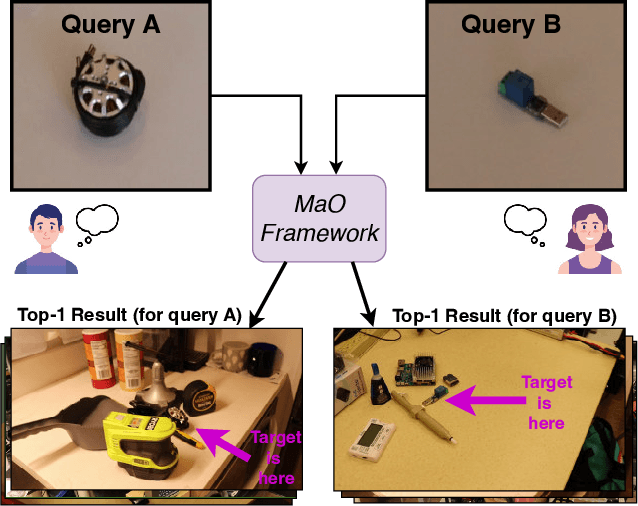
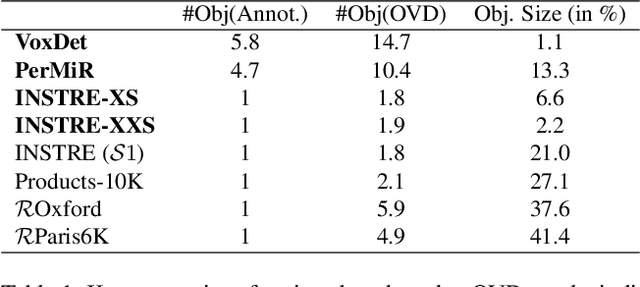
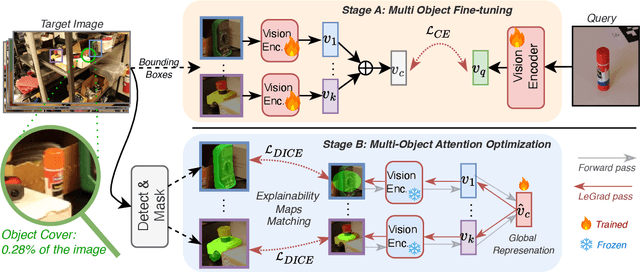
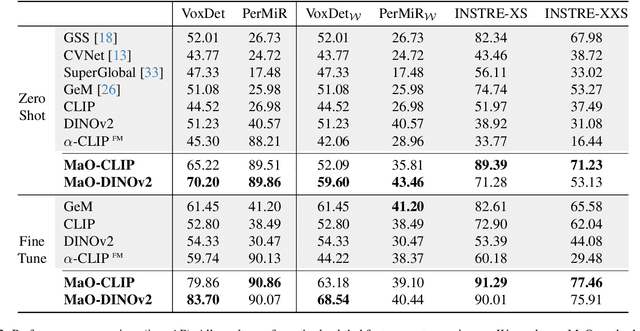
Abstract:We address the challenge of Small Object Image Retrieval (SoIR), where the goal is to retrieve images containing a specific small object, in a cluttered scene. The key challenge in this setting is constructing a single image descriptor, for scalable and efficient search, that effectively represents all objects in the image. In this paper, we first analyze the limitations of existing methods on this challenging task and then introduce new benchmarks to support SoIR evaluation. Next, we introduce Multi-object Attention Optimization (MaO), a novel retrieval framework which incorporates a dedicated multi-object pre-training phase. This is followed by a refinement process that leverages attention-based feature extraction with object masks, integrating them into a single unified image descriptor. Our MaO approach significantly outperforms existing retrieval methods and strong baselines, achieving notable improvements in both zero-shot and lightweight multi-object fine-tuning. We hope this work will lay the groundwork and inspire further research to enhance retrieval performance for this highly practical task.
EffoVPR: Effective Foundation Model Utilization for Visual Place Recognition
May 28, 2024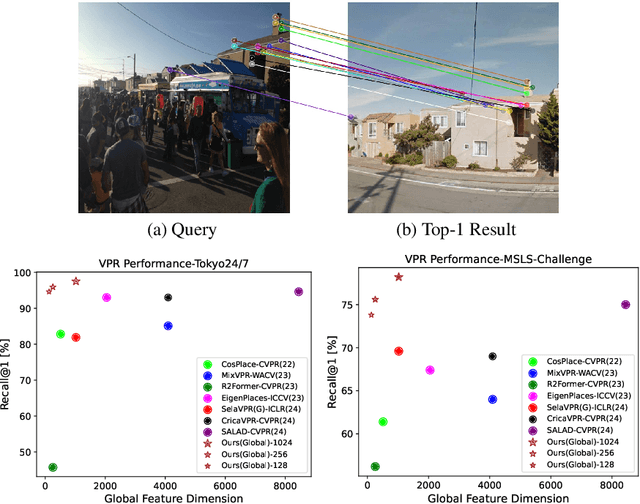
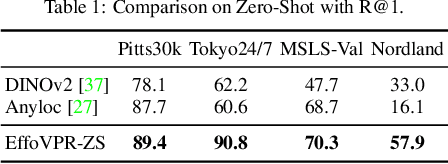
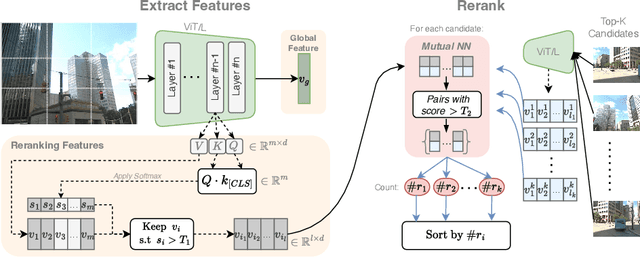
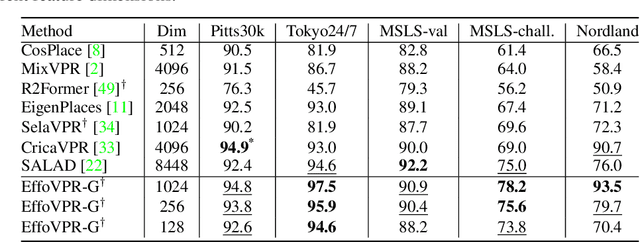
Abstract:The task of Visual Place Recognition (VPR) is to predict the location of a query image from a database of geo-tagged images. Recent studies in VPR have highlighted the significant advantage of employing pre-trained foundation models like DINOv2 for the VPR task. However, these models are often deemed inadequate for VPR without further fine-tuning on task-specific data. In this paper, we propose a simple yet powerful approach to better exploit the potential of a foundation model for VPR. We first demonstrate that features extracted from self-attention layers can serve as a powerful re-ranker for VPR. Utilizing these features in a zero-shot manner, our method surpasses previous zero-shot methods and achieves competitive results compared to supervised methods across multiple datasets. Subsequently, we demonstrate that a single-stage method leveraging internal ViT layers for pooling can generate global features that achieve state-of-the-art results, even when reduced to a dimensionality as low as 128D. Nevertheless, incorporating our local foundation features for re-ranking, expands this gap. Our approach further demonstrates remarkable robustness and generalization, achieving state-of-the-art results, with a significant gap, in challenging scenarios, involving occlusion, day-night variations, and seasonal changes.
Set Features for Anomaly Detection
Nov 24, 2023Abstract:This paper proposes set features for detecting anomalies in samples that consist of unusual combinations of normal elements. Many leading methods discover anomalies by detecting an unusual part of a sample. For example, state-of-the-art segmentation-based approaches, first classify each element of the sample (e.g., image patch) as normal or anomalous and then classify the entire sample as anomalous if it contains anomalous elements. However, such approaches do not extend well to scenarios where the anomalies are expressed by an unusual combination of normal elements. In this paper, we overcome this limitation by proposing set features that model each sample by the distribution of its elements. We compute the anomaly score of each sample using a simple density estimation method, using fixed features. Our approach outperforms the previous state-of-the-art in image-level logical anomaly detection and sequence-level time series anomaly detection.
Set Features for Fine-grained Anomaly Detection
Mar 02, 2023



Abstract:Fine-grained anomaly detection has recently been dominated by segmentation based approaches. These approaches first classify each element of the sample (e.g., image patch) as normal or anomalous and then classify the entire sample as anomalous if it contains anomalous elements. However, such approaches do not extend to scenarios where the anomalies are expressed by an unusual combination of normal elements. In this paper, we overcome this limitation by proposing set features that model each sample by the distribution its elements. We compute the anomaly score of each sample using a simple density estimation method. Our simple-to-implement approach outperforms the state-of-the-art in image-level logical anomaly detection (+3.4%) and sequence-level time-series anomaly detection (+2.4%).
 Add to Chrome
Add to Chrome Add to Firefox
Add to Firefox Add to Edge
Add to Edge